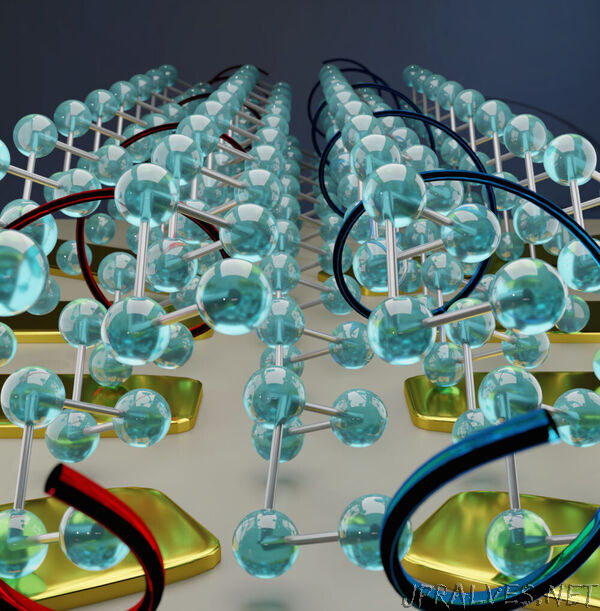
“Researchers from the Basque Nanoscience Research Center CIC nanoGUNE (San Sebastian, Spain), in collaboration with POLYMAT (San Sebastian, Spain), the Institute of Physics of the Martin Luther University Halle-Wittenberg and the Max Planck Institute of Microstructure Physics (both in Halle, Germany) demonstrate the all-electrical generation, manipulation, and detection of spin polarization in chiral single-crystalline Tellurium nanowires. The results, published in Nature Materials (DOI: 10.1038/s41563-022-01211-7), pave the way for the development of magnet-free chirality-based spintronic devices.
Chiral materials are an ideal playground for exploring the relation between symmetry, relativistic effects, and electronic transport. For instance, chiral organic molecules have been intensively studied to electrically generate spin-polarized currents in the last decade, but their poor electronic conductivity limits their potential for applications. Conversely, chiral inorganic materials such as Tellurium have excellent electrical conductivity, but their potential for enabling the electrical control of spin polarization in devices remains unclear.
In this recently publish work, it was shown that the orientation of the electrically generated spin polarization is determined by the nanowire handedness and uniquely follows the current direction, while its magnitude can be manipulated by an electrostatic gate. This was found by recording a large (up to 7%) and chirality-dependent unidirectional magnetoresistance.
The Nanodevices group at nanoGUNE is focused in researching the electronic properties of systems in reduced dimensions, and is a worldwide leading group in the field of spintronics. Ikerbasque Profesor Luis Hueso, leader of the Nanodevices group describes the excitement of the research group when analyzing the results of the experiments: “It has been amazing to perfectly identify the nanowires formed by right- or left-handed Tellurium chains thanks to the high-resolution STEM images, and to transfer individually selected nanowires onto Si/SiO2 in order to carry out the transport experiments that made us discover that the current induced spin polarization is reversed for opposite nanowire handedness”.”
